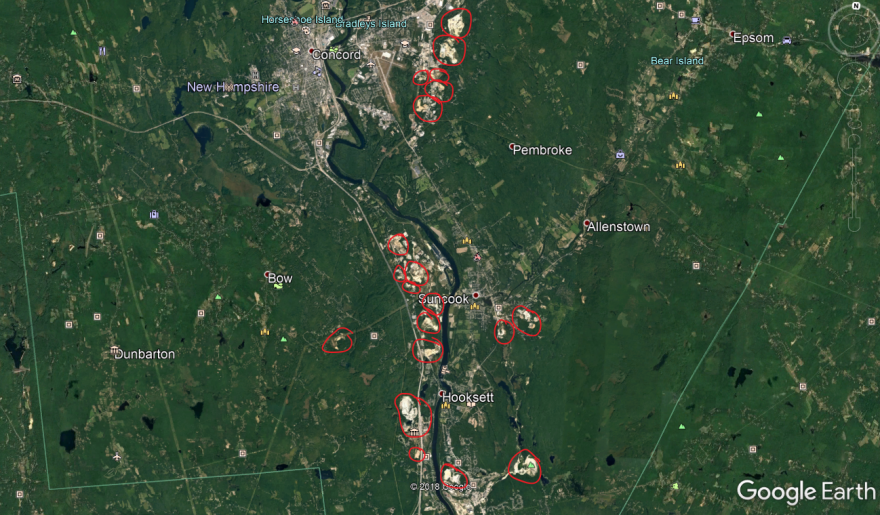Every other Friday on Morning Edition, NHPR’s Sam Evans-Brown tracks down answers to questions about the environment and outdoors for our listeners in a segment we call “Ask Sam.”
This week, he's tackling a gritty one from a listener named Laura from Stratham:
“My husband is a native of New Hampshire and I am a transplant. He and I were talking the other day about the fact that though New Hampshire is known as the Granite State, when he was young he remembers sand pits all over the place. He knew many people who were in the sand pit industry. Where do these sandpits come from and should New Hampshire be knowns as the sand pit state?”
The Sandpit State does have a nice ring to it. I’m going to submit this to the appropriate authorities for consideration.
Sand has been a pretty hot topic recently, so my first question was, does New Hampshire have more or less sand than other states?
The US Geological Survey keeps track of sand and gravel production, but because transporting large quantities of sand is expensive, this is a mostly local business, and the top producing states are just the biggest states.
But, when you divide the production by the population of each state you notice a trend: 12 of the top 20 sand producing states were under ice during the last glacial maximum.
Why would that be? Well, geologists call glaciers “dirt machines” because they grind up rocks, turning them into smaller and smaller rocks, which we then give funny names like gravel, sand, silt and clay.
When those dirt machines melt, they leave a lot of sand behind.
But how do you get a sand "pit?"
If you went back to the end of the Pleistocene, NHPR’s offices in Concord would have been at the bottom of a great glacial lake that ran all the way from Plymouth to Manchester.
“From - essentially - valley wall to valley wall was filled with water,” explains state geologist Rick Chormann.
But instead of the clear water of Lake Winnipesaukee, it would have been the milky, silty, turquoise blue water you see at the foot of glaciers, because it would have been full of sediment ground up by the dirt machines.

As the glaciers melted, the fast running water carried sediments downstream, but when the rivers hit a lake and the water slowed down, the sand would have dropped out and settled onto the lake-bed. Then, next thing you know, the ice age was over, the glaciers and lakes were gone, and what was left was a sandpit.
“You can picture the Merrimack Valley as, at one point, having been completely filled with sediment,” says Chormann.
Indeed, if you look at the satellite image, the I-93 corridor down the Merrimack river valley is Sandpit Central.

Sand could pile in other spots too. For instance, if a small, isolated glacial lake forms on a hillside, you can wind up with a sandy little lump called a Kame Terrace.
Generally speaking, if you see a sandpit it's a good bet there may have been a giant pool of melted glacier water in that spot tens of thousands of years ago.
A sand pit by any other name
Now, a quick quiz: What do you call an underground, underwater sandpit?
“Those resources at depth, are an important groundwater resource,” says Chormann, “The stratified drift aquifers that are there because of those deposits are an incredibly important resource for New Hampshire.”
How important? Crazy important!
79 percent of our public water supplies that rely on wells are tapping into stratified drift aquifers (read: underground sand pits, beneath the water table) and that percentage is even higher in Southern New England.
To sum it up, the glaciers gave us sandpits, and a great source of clean water.
In other words, if you really want to go with the Sandpit State, I’m down for the rebrand.
*This piece was originally broadcast in July 12, 2019*
Sam Evans-Brown, is host of NHPR’s Outside/In which you can subscribe to where-ever you get your podcasts. If you’d like to submit a question you can record it as a voice memo on your smartphone and send it to oustidein@nhpr.org, OR call the hotline, 1-844-GO-OTTER, OR submit it here.








